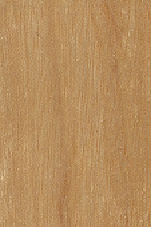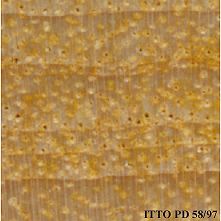
MEDANG (Cinnamomum porrectum)
Trade Name
Medang
Scientific Name
Cinnamomum porrectum (Roxb.) Kosterm.
Family
LAURACEAE
Common Names
Theptharo (Thailand); Medang serai (Indonesia); Medang lesah (Indonesia); Medang busok (Indonesia); Laso; Keplah wangi (Malaysia); Kepaleh; Kayu gadis; Kajoe lada; Kajoe gadis; Gadis; Chintamula hitam; Safrol laurel (United Kingdom); Re huong (Vietnam); Thep tharo (Thailand); Karawa (Myanmar); Ki sereh (Indonesia); Safrol laurel (United States of America); Bunsod (Sabah); Keplah wangi (Sarawak); Medang kemangi (Malaysia); Rawali (Borneo); Selasihan (Indonesia); Teja (Sarawak); Teja (Malaysia); Huru (Indonesia); Medang (Indonesia)
Scientific Name Synonyms
Cinnamomum sumatranum (Miq.) Meissner; Cinnamomum porrectum (Roxb.); Cinnamomum glanduliferum C. Nees (Roxb.)
Description Of The Tree
Botanical Description
It is a medium-sized to large tree up to 45 m tall. The bole is straight, cylindrical and up to 105 cm in diameter, sometimes buttressed.
Natural Habitat
This species occurs commonly in lowlands to montane forest, on both fertile and poor soils, usually on well drained areas.
Non Timber Uses
Essential oils are obtained by steam distillation of medang.
Wood Identification
Anatomic Description Of Wood
Tyloses common. Vessels per mm2 more than 20 (very abundant). Vessel-ray pits reticulate and/or foraminate. Simple perforation plates. Intervessel pits medium, 7 to 10 micras. Axial parenchyma in marginal or in seemingly marginal bands. Apotracheal axial parenchyma diffuse and/or diffuse in aggregates. Paratracheal axial parenchyma scanty and/or vasicentric. Occasionally axial parenchyma lozenge-aliform. 4 to 10 rays per mm (medium). Oil and/or mucilage cells associated with the axial and/or ray parenchyma (idioblasts). Body ray cells procumbent with mostly 2 to 4 rows of upright and/or square marginal cells (Kribs-II). Occasionally septate fibers present. Fibers with simple to minutely bordered pits.
-
 Wood Macro Photo Tangential Plane
Wood Macro Photo Tangential Plane
-
 Wood Micro Photo Of Transversal Section
Wood Micro Photo Of Transversal Section
Availability
Cites Status
Unrestricted
General Wood Description
Odor
Usually the wood has a persistent camphor-like odor.
Color
The heartwood varies in color from grayish-green to pinkish, reddish or pale brown, sometimes turning to red-brown or walnut-brown on exposure, and is usually not distinctly demarcated from the straw-colored, pale pink or pale brown sapwood.
COLOR INDEX (1=Black, 7=Light yellow,white)
5
Grain
The grain is straight to moderately interlocked.
Texture
Texture of this species is reported to vary from fine to medium.
Natural Durability
The wood is moderately durable when exposed to the weather or in contact with the ground. C. porrectum is rated as the most durable species among the medang group.
Natural durability index (1= Very high durability, 7=Vey low durability)
3
Resistance To Impregnation
The wood is extremely resistant to preservative treatment.
Wood Physical Properties
Basic Density or Specific Gravity (O.D. weight/vol. green) (g/cm³)
0.52
Air-dry Density (Weight and volume at 12%MC) (g/cm³)
0.57
Total shrinkage Tangential (Saturated to 0%MC) (%)
5.7
Total shrinkage Radial (Saturated to 0%MC) (%)
3.3
Drying Defects
Ease of Drying: Drying is reported to be slow but rarely develops serious seasoning defects, except for slight cupping. Drying Defects: Risk of surface checking and end splitting. Kiln Schedules: Schedule suggested for Merawan. In Malaysia kiln-drying schedule H is recommended. It takes 5 days for 25 mm thick boards to kiln dry from 50% to 10% moisture content.
Dimensional stability ratio (Total Tangential Shrinkage %/Total Radial Shrinkage %)
1.7
Wood Chemical Properties
Wood Mechanical Properties
Bending Strength (MOR),12%MC (kgf/cm²)
591
Stiffness (MOE) 12%MC (kgf/cm²)
84934
Compression parallel to fiber 12%MC (kgf/cm²)
598
Shear strength radial 12%MC (kgf/cm²)
74
Janka hardness (side) 12%MC (kgf)
241
Janka hardness (end grain) 12%MC (kgf)
242
Workability
Sawing
Sawing of this species is reported to be rather easy.
Blunting Effect
It has a moderate blunting effect on the cutting tools.
Machining
It is easy to machine.
Turning
30
Nailing
This species is reported to have a good nailing behavior.
Finishing
Wood of this species is easy to finish.
Staining
It has a good staining.
Coatings
Painting or varnishing of this species is reportedly easy.
Response To Hand Tools
It has a good response to hand tools.
REFERENCED USES
End Uses Summary
HOUSING GENERAL, panelling, FURNITURE AND CABINETS, luxury furniture, cabinets, PLYWOOD AND VENEER, TURNING, SPORTS, TOOLS, agricultural tools, CONTAINERS, truck bodies, NAVAL CONSTRUCTION, OTHER AND MUSICAL INSTRUMENTS, handicrafts, shoes, coffin, moldings
General Housing
- 10 - Silica in Timbers
Paneling
- 18 - W3TROPICOS Missouri Botanical Garden
Furniture Cabinets
- 21 - Tropical timbers of the world. Part III-Southeast Asian and Oceanian Species.
Furniture, Luxury
- 22 - Dry kiln schedules for commercial woods. Temperate and tropical. Section IV-Asian and Oceanian Woods
Cabinet
- 24 - Empire Timbers
Panels, Veneers
- 25 - Directory of Timber Trade Malaysia
Turning
- 30 - Embassy of Honduras in Japan
Sports
- 38 - Annual Review and Assessment of the World Timber Situation 1998-ITTO
Tools
- 42 - Utilización Industrial de Nuevas Especies Forestales en el Perú.
Agricultural Tools
- 44 - Atlas of Peruvian Woods
Truck Body
- 53 - Timbers of the New World
Shipbuilding
- 55 - Tropical Timber Atlas of Latin America
Other & Musical Instruments
- 63 - Madeiras do Brazil II
Handcraft
- 66 - Maderas latinoamericanas. VII. Caracteristicas anatomicas. propiedades fisicomecanicas, de secado, y tratabilidad de la madera juvenil de Cordia alliodora (Ruiz & Pav. Oken.)
Shoes
- 70 - Proprietes physiques et mecaniques des bois tropicaux de l`union francaise
Coffin
- 78 - Amazonian Timbers for the International Market
Molding
- 79 - Padronização da Nomenclatura Comercial Brasileira das Madeiras Tropicais Amazônicas, Sugestão
Please Provide Information To View Producer Information